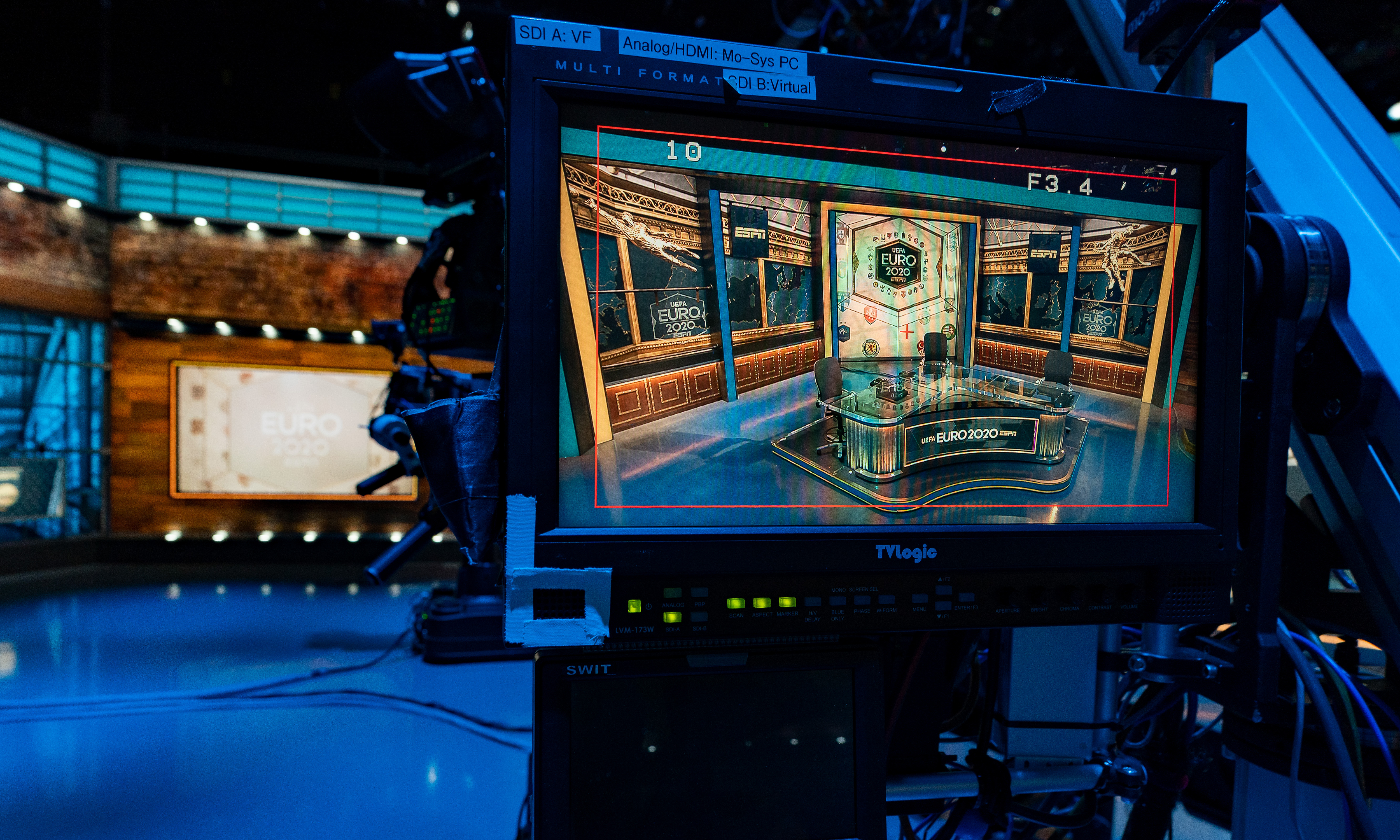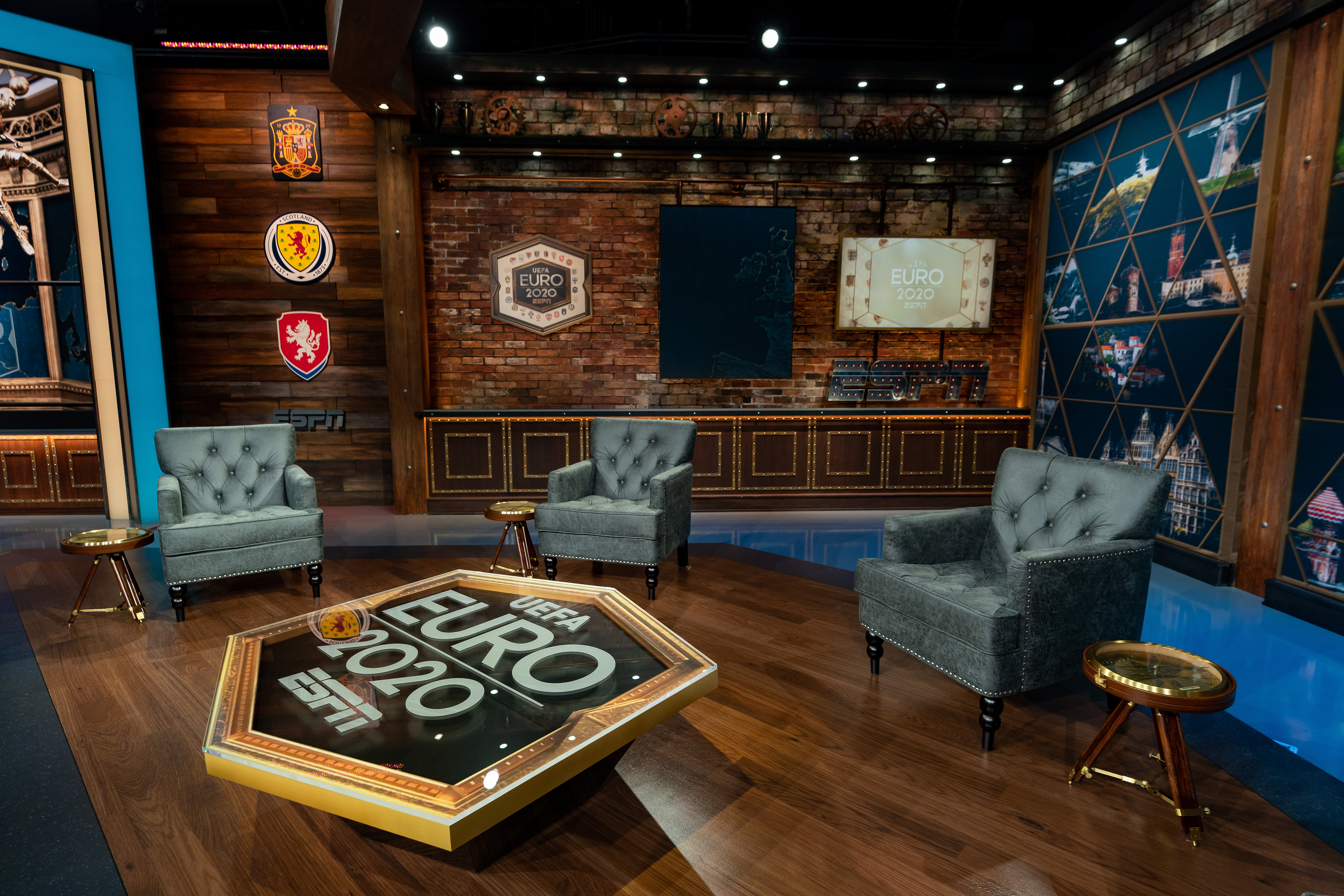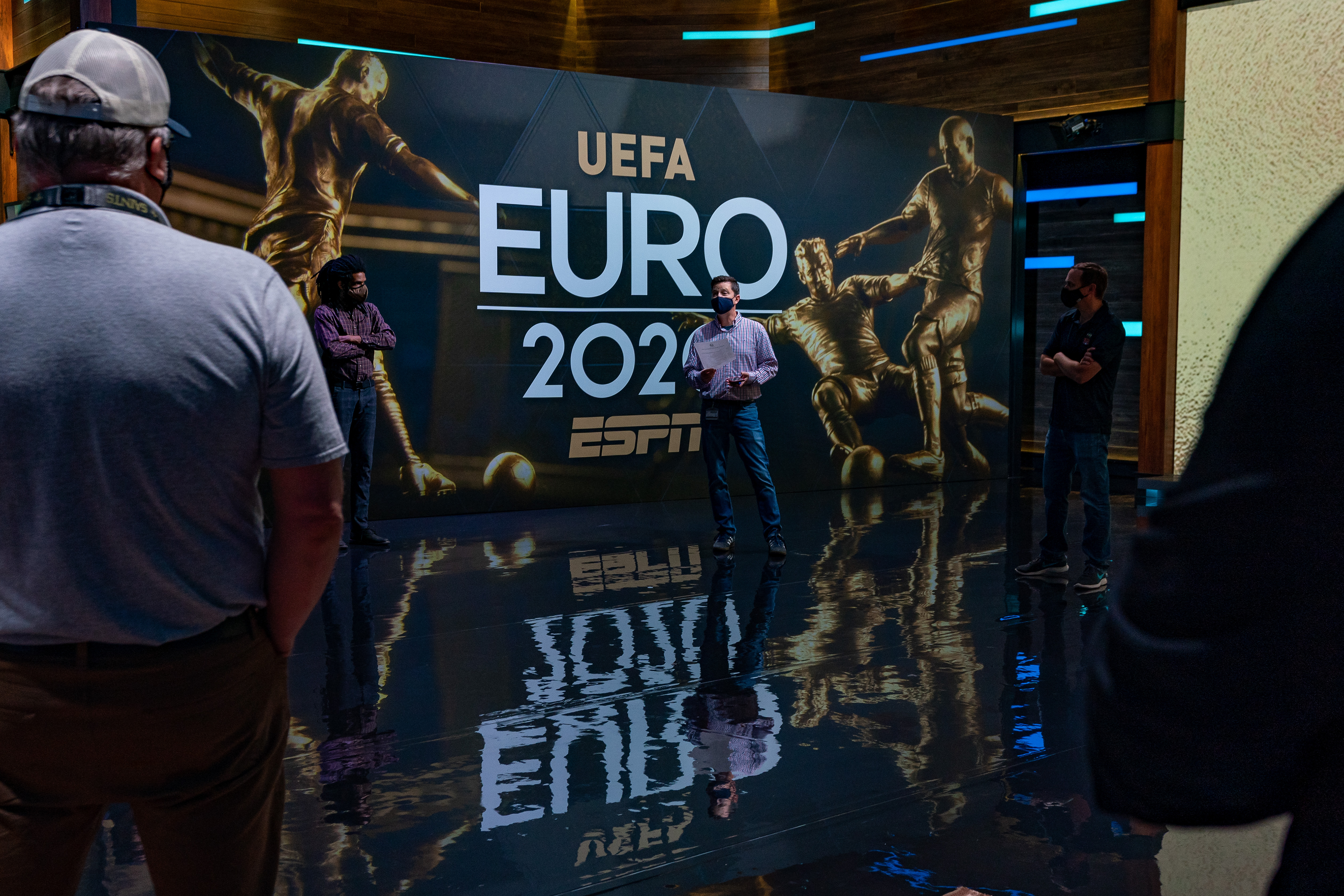EURO 2020: ESPN Infuses Geography Into Tech-Heavy Bristol-based Studio Sets
After COVID scuttled plans for onsite studio presence, ESPN makes most of space at home campus
Story Highlights
“These events are not for the faint of heart.”
Words drenched in truth from ESPN VP, Production, Amy Rosenfeld, a sports-television veteran who has been here before.

ESPN’s studio coverage of the 2020 UEFA European Football Championships are anchored from space at the broadcaster’s Bristol campus. (Photo: ESPN)
Be it World Cups, European championships, or other mammoth events, Rosenfeld and much of the crew working ESPN’s coverage of the UEFA European Football Championship, which kicked off this past Friday, know what it takes to produce an event of this size, length, and global significance.
This marks the fourth straight year (following 2008, 2012, and 2016) that ESPN networks and ABC have carried the month-long competition in the U.S., presenting all 51 matches (140 combined hours of live coverage) of the UEFA European Football Championship 2020.
Although the matches themselves are produced by UEFA’s host broadcasters, ESPN is supplementing the coverage in a big way despite COVID protocols that limit its ability to be onsite as much as the broadcaster would like. ESPN will have its own on-air talent and host a substantial studio presence originating from its home campus in Bristol, CT.
Anyone who has ever worked an event of this size and scope (a FIFA men’s or women’s World Cup or an Olympic Games, for example) knows the sheer fortitude it takes to be a part of the crew. ESPN behind-the-scenes staffers are working nearly 12-hour days during the Group Stage, arriving for their first production meeting of the day at 5 a.m. ET.
“I don’t think people really recognize the kind of marathon it is,” says Rosenfeld. “What I think is so critical is, it’s one team. Regardless of what department you come from — ops, directing, a technical position, catering, whatever — it is just the Euros team. I have found over the years that, as hard as this is, when you feel like you are part of the team, everyone is really pulling together. I think that does carry you through what is the worst grind that anyone can do in television, an event like this.”

A secondary set allows talent to be socially distanced in a conversational setting for between-match discussion. (Photo: ESPN)
Obviously, this event was supposed to be held a year ago but was postponed due to the COVID-19 pandemic. The coronavirus, in fact, is still ravaging the tournament, with certain venues hosting only a limited number of fans, some matches relocated due to full lockdowns, and multiple teams having players test positive for the virus. As a result, ESPN, which has a rich history of a strong onsite studio presence in broadcasting events like the FIFA World Cup and the Euros, has instead needed to make the most of its facilities in Bristol.
The studio is built with social distancing in mind. The primary desk is large and wide, with space for three on-air personalities. A secondary set, for more-casual conversations and analyses, features individual chairs for talent spaced apart.
Adjusting the space for safety was a challenge because the studio used was, naturally, not designed to meet distancing guidelines. According to ESPN director Steve Zawilinski, who helps oversee much of the broadcaster’s studio efforts in Bristol, that meant moving traditional spots for monitors and rethinking the positioning of crossbeams that might be hidden in a typical design.
“In true ESPN fashion,” he says, “nobody will be able to tell that this is a set that they’ve seen on-air before. We were able to completely retrofit it. It is gorgeous.”
One of the tech highlights of this studio space is a virtual depth monitor paired with the room’s largest LED screen. According to Zawilinski, the studio crew is able to create a virtual environment within the monitor, producing what looks like 3D space to the viewer. The camera assigned to it can move around the content on the LED screen.
For example, the studio team is attempting to deliver that sense of geography lost in not being onsite, making the map of Europe a centerpiece of its graphics package. Free movement in and around that map is a key storytelling item in the multi-city event’s transition from venue to venue.
Also, the technology allows on-air talent to break down plays in the format, with a field of play traversed in a 3D environment.
“We said, ‘How do we utilize this giant monitor in a way that no one has ever seen before?’” says Zawilinski. “We challenged our virtual team, and it’s just incredible. The Creative Services team just went above and beyond. I think this is one of our advantages of [deploying] some of the technology that we have in Bristol that we wouldn’t have if we were onsite.”
All match telecasts are getting the full pre/postgame and halftime studio treatment across the ESPN family of networks. EURO Today airs between matches throughout the tournament; EURO Tonight, on match days after the last match of the day.
“The reason this looks so great and the reason this is going to be excellent is the cumulative years of this group,” says Rosenfeld. “World Cups, Euros — the reason this is all successful is the bond of this group. [ESPN Senior Remote Operations Specialist Claude Phipps] was there when we had generators that were failing in Brazil and we were 48 hours to air. We had the rioting in France that went to our host set. It’s this group [that is] why it looks so beautiful. We know each other; we trust each other.”
ESPN’s coverage of the 2020 UEFA European Football Championship continues Tuesday with Hungary-Portugal at noon ET and France-Germany at 3 p.m., both on ESPN. The final is scheduled for Sunday, July 11 at 3 p.m. on ESPN.

